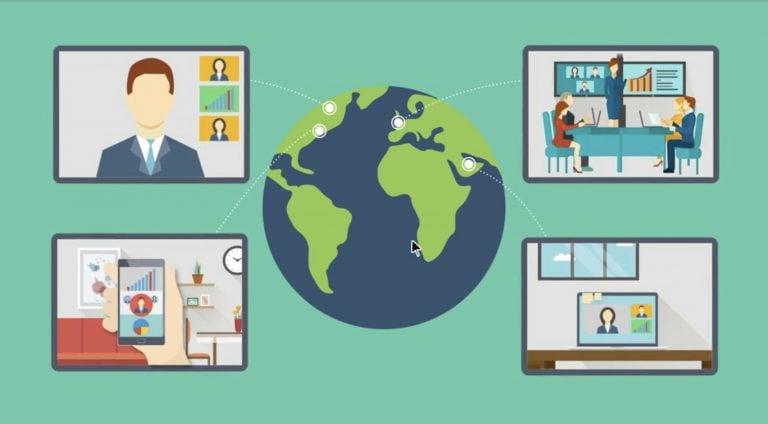Using cloud computing to coordinate any office with ease
This Winnipeg entrepreneur found a digital solution for coordinating her growing staff

Share
Sheri Atchison, president of Winnipeg-based architectural planning company Accurate Drafting, is no stranger to technological innovation. She and her team use a laser-drafting tool called Leica Disto that automatically transmits building measurements directly to the CAD (computer-aided design) program on their laptops—no manual data input required. But it wasn’t always that way.
When Atchison first started her business in 2007, she would measure with the laser, then write the numbers down—a process that made it all too easy to introduce gaps and errors. “There were some projects when we first started where we would have to go back two or three times,” she adds. But once she hired her first employees, she knew she wanted a higher-tech system that would improve the quality—and speed—of their work. “We took the time to investigate and learn how [the laser system] worked, and we’ve been using it ever since.”
The laser tool—and her newer acquisition, a portable 3D scanner—aren’t the only way Atchison uses technology to improve her workflow and the efficiency of her team. Two key software programs allow her to keep the business running smoothly and stay on top of her to-dos.
Take Asana, for instance, a cloud-based project management and collaboration tool she and her team adopted in 2016. One main reason she chose Asana was for its calendar view, which allows her to see everything her team is working on, so she can add new projects without risking overloading schedules. (It helps, she adds, that projects can be colour-coded for easy interpretation.) The layout is automatically created based on project timelines and task lists, so it’s always ready to view. “I was having trouble keeping track and knowing where I could place a new project,” Atchison says. “This allows me to give a better timeline on the phone to someone, so I can say yes, we can fit it in this week or next week.”
Another Asana feature—one that is common to many similar programs—is an email-to-task function that allows her to forward emails into the system, so that they get turned into items on her personal task list and the messages can be filed immediately, reducing email inbox clutter. Everything in the email goes into Asana, from the subject line to the body text and any attachments—and you can edit text and add your own notes before forwarding. “Previously I would flag all my emails [requiring follow-up], but I found that didn’t help me because I was just focusing on the inbox,” Atchison says. “It’s easier for me now because anything that needs to be dealt with right away, I throw into Asana, and then I can deal with my emails easier.”
The other essential program is Minute7, a cloud-based timesheet application that integrates with QuickBooks. Previously, staff would track their time on a piece of paper—and with numerous clients, they might be working on five to seven projects a day—and then Atchison would enter those hours into QuickBooks manually, an onerous process. “I was finding it too much work to be essentially copying,” she says. “Switching [to Minute7] was a huge time saver.”
Atchison creates projects in QuickBooks then synchronizes with Minute7 so that when employees use the program, they just have to choose from a drop-down menu of options, eliminating errors that might result from having to type in project names. At the end of each week, she synchs again and reviews timesheet data in QuickBooks, scanning for errors and then running reports and creating invoices when needed.
Maintaining accurate timesheets doesn’t just help Atchison and her team work more efficiently. It helps her refine her estimates and pricing, too, so she can ensure she’s charging the right amount for the right project—and making a profit. Previously, “we were underestimating by 10 or 12%,” she says. “Now, we can adjust our pricing and I’m able to see [the difference] on our reports.”
The beauty of cloud-based systems such as Minute7 and Asana, she adds, is that they can be accessed from any device, anywhere. Staff might enter their hours from their smartphones, for instance, while Atchison reviews timelines from her own mobile device. Building easy-to-use software into the team’s workflow allows for better organization and a more efficient business, she adds. “I’m offsite quite a bit,” she says. “I can see what everybody’s working on and the status [from anywhere].”
This article was originally published in Canadian Business.
